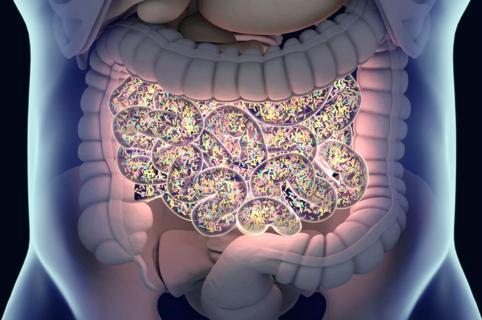Restoring ‘nature’s rubber band’ with the help of nanotechnology

New elastogenic therapies based on nanotechnology could one day help women with pelvic organ prolapse.
Advertisement
Cleveland Clinic is a non-profit academic medical center. Advertising on our site helps support our mission. We do not endorse non-Cleveland Clinic products or services. Policy
“The extracellular matrix that makes up connective tissue has three major components: collagen, elastin and ground substance,” says Margot Damaser, PhD, a researcher in the Department of Biomedical Engineering at Cleveland Clinic’s Lerner Research Institute. “We are researching a way to help restore elastin, which provides the recoil strength to tissues and is known as ‘nature’s rubber band.’”
“Elastin is important for normal functioning of the pelvic floor and pelvic organs, but the body’s ability to restore elastin in an adult is essentially zero,” she explains. “Part of the reason women experience pelvic organ prolapse is a deficiency in the body’s ability to repair elastin, compounded by the normal degradation of elastin with ageing.”
Pelvic organ prolapse is a relatively common problem in postmenopausal women who have had children.
“About 10 percent of older women, and a slightly higher percentage of women who have had children, will develop pelvic organ prolapse,” explains Dr. Damaser. Her research is a collaboration with Anand Ramamurthi, PhD, an elastin and nanotechnology expert in the Department of Biomedical Engineering.
“Women with pelvic organ prolapse have traditionally been treated by surgical insertion of an artificial transvaginal mesh to lift up and support pelvic organs,” says Dr. Damaser. “However, this treatment has been associated with a range of complications.”
Dr. Damaser’s team is working on developing new, physiologically based, elastogenic therapies that can be delivered intravaginally to prevent or slow development of prolapse. They believe that nanotechnology is especially suitable for development of physiologically based therapies, due to its biocompatible nature.
Advertisement
“Using nanotechnology, we can form tiny, biocompatible spheres that can be incubated with different elastogenic treatments, such as hyaluronan or doxycycline,” she says. “Our goal is to develop a therapy that can be infused into the vagina, where it will cross the epithelial layer and penetrate muscles of the pelvic floor, without the need for an injection.” The team is investigating how far agents migrate in an animal model to ensure migration is not excessive and harmful.
Dr. Damaser’s team, still in early stages of the project, is testing elastogenic therapies in cell culture experiments with animal and human tissues in a mouse knockout model. The knockout mice have an elastin crosslinking enzyme (lysyl oxidase-like 1 [LOXL-1]) deficiency, causing them to develop pelvic organ prolapse.
“These mice develop prolapse in a pattern that closely resembles how women develop prolapse — years and decades after pregnancy and delivery. In mice, this time is proportionally shorter, so approximately 12 weeks after delivery, 50 percent of the knockout mice will have developed prolapse,” explains Dr. Damaser.
The project is funded by a National Institutes of Health R21 grant through September, 2019. Dr. Damaser is optimistic that her team will gather enough data by this date to move forward with the next steps and test this potential therapy in tissues from women in a cell culture environment, as well as in larger animals, prior to full clinical studies.
Advertisement
Advertisement

First full characterization of kidney microbiome unlocks potential to prevent kidney stones

Researchers identify potential path to retaining chemo sensitivity

Large-scale joint study links elevated TMAO blood levels and chronic kidney disease risk over time

Investigators are developing a deep learning model to predict health outcomes in ICUs.

Preclinical work promises large-scale data with minimal bias to inform development of clinical tests

Cleveland Clinic researchers pursue answers on basic science and clinical fronts

Study suggests sex-specific pathways show potential for sex-specific therapeutic approaches

Cleveland Clinic launches Quantum Innovation Catalyzer Program to help start-up companies access advanced research technology